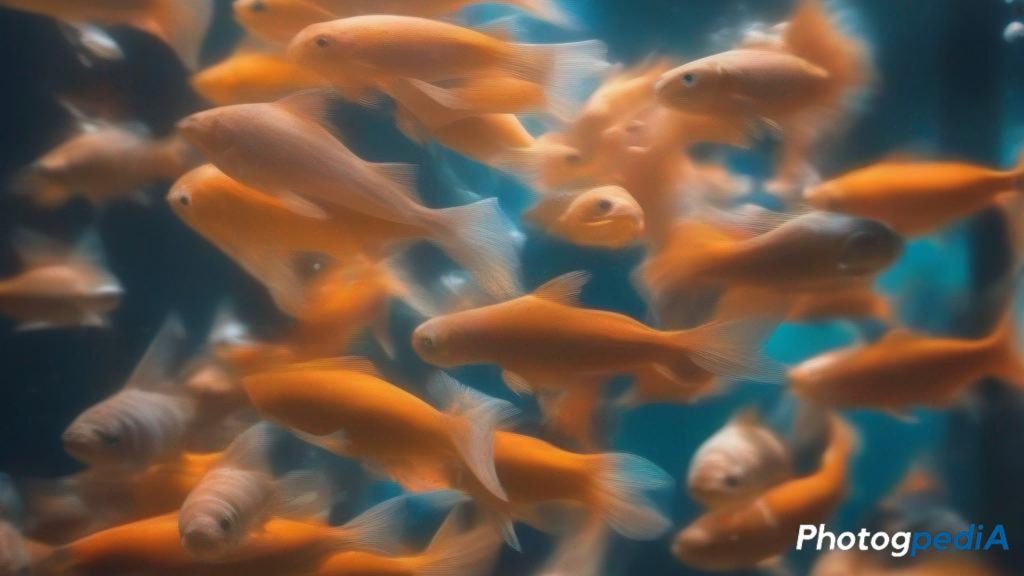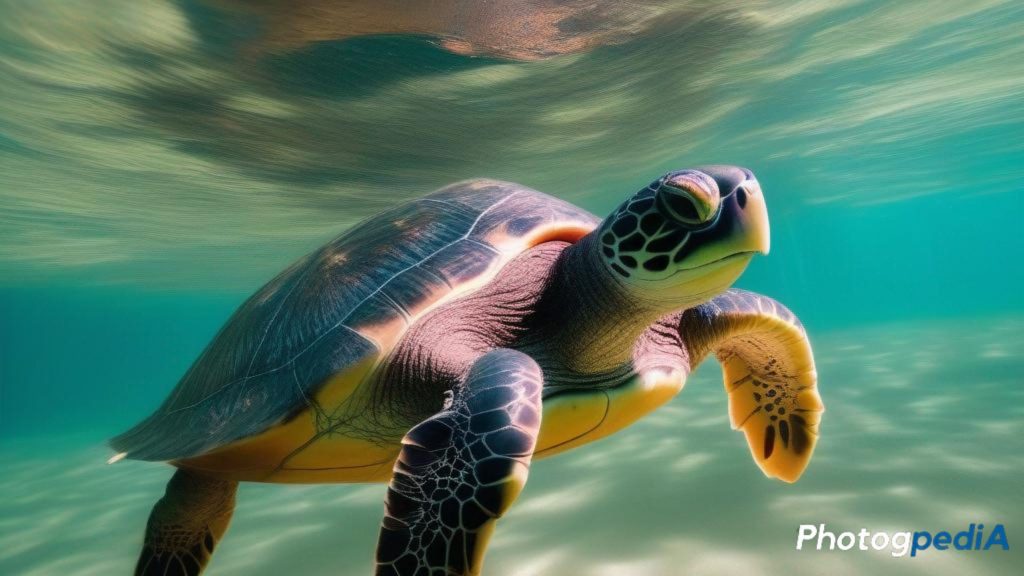The world beneath the waves has always held a sense of mystery for me. Ever since my first trip to the ocean, I’ve been drawn to its depths. So, when the opportunity arose to try underwater photography, I eagerly plunged in, camera in hand. Little did I know, capturing stunning underwater images would require a whole new set of underwater photography tips and tricks compared to my usual photography adventures.
While the challenges were initially frustrating, they ultimately pushed me to develop a new skillset. With the right techniques and approach, I discovered a hidden world teeming with photographic possibilities. Here are some valuable underwater photography tips I’ve learned along the way to elevate your underwater photography game, whether you’re a seasoned pro or just setting out on your first underwater adventure.
Table of Contents
Lighting Underwater Photography Tips
Descending beneath the waves for the first time with my camera, I was struck by the dramatic shift in light. Gone were the familiar cues of sunlight and shadow I relied on for my land photography. Here, the underwater world revealed its own unique set of lighting rules.
Unlike air, water is a denser medium that absorbs and scatters light waves differently depending on their wavelength. Red light is absorbed first, followed by orange and yellow. This is why the vibrant colors we see on land appear muted underwater, with blues and greens penetrating deeper.
This newfound understanding of underwater light, however, proved to be a game-changer. By following these next tips, you’ll be well on your way to mastering light and capturing vibrant images in this captivating underwater realm.

Mastering Composition
In the early days of my underwater photography adventures, I crammed everything into the frame, often ending up with cluttered and confusing compositions.
It wasn’t until I revisited the fundamentals of composition, like the rule of thirds, that my underwater images truly started to pop. This essential rule suggests placing your subject along one of the imaginary intersecting lines that divide the frame into thirds, creating a more balanced and dynamic composition. However, composition goes beyond just following the rules.
Experimenting with different angles can breathe life into your photos. Imagine getting down low to eye-level with a vibrantly colored nudibranch, or tilting your camera upwards to capture a sunbeam dancing through the water column.
Choosing the Right Subject
Frustration bubbled to the surface (pun intended!) during my early forays into underwater photography. I’d excitedly snap away at everything that caught my eye, resulting in a chaotic collection of generic underwater shots.
That’s when I realized the importance of choosing the right subject. A strong subject becomes the focal point of your image, drawing the viewer in and telling a story. This doesn’t necessarily mean capturing a majestic shark (although that’s certainly awe-inspiring!).
The key is to find subjects that spark curiosity, like a lone seahorse clinging to a coral stalk. Even captivating underwater landscapes, with schools of fish weaving through rock formations, can become compelling subjects.
Working with Depth and Distance
One of the biggest surprises I encountered underwater was the way water magnified objects closer to the camera lens. Those wide-angle macro shots I envisioned on land required a completely different approach underwater. Understanding how water affects depth and distance is crucial for creating balanced compositions. By experimenting with different shooting distances, I learned to minimize distortion in order to create a more natural sense of depth in my underwater images.
Maintaining Stability
Battling against gentle currents while trying to capture a shy anemonefish in my early underwater photography days proved to be an exercise in frustration. My shots ended up blurry and shaky, a far cry from the crisp underwater images I envisioned. This is where mastering stability becomes paramount.
Maintaining neutral buoyancy, as discussed earlier, is a key element, but there are other techniques to ensure rock-steady shots. Bracing yourself against a stable object like a rock momentarily can provide a platform for a clear shot. For even more stability, consider using a dedicated underwater tripod – a game-changer for macro photography or capturing slow shutter speed effects.
Capturing Motion

The graceful undulations of a passing stingray left a lasting impression during one of my dives. However, translating that movement into my photos proved to be a challenge. My initial attempts resulted in blurry, smeared images that failed to capture the elegance of the creature.
This is where mastering shutter speed comes into play. By experimenting with different shutter speeds, I discovered how to freeze the motion for a sharp image of the stingray, or use a slower shutter speed to create a sense of movement and blur, emphasizing the creature’s graceful flow through the water.
Focusing Techniques
During my initial dives with a camera, achieving sharp focus felt like an underwater wrestling match. Limited visibility and constantly moving subjects made focusing a frustrating game of chance. However, mastering proper focusing techniques transformed my underwater photography. By utilizing autofocus features effectively and leveraging focus-lock functions, I learned to keep my desired subject crisp and clear within the frame. The following underwater photography tips will equip you with the knowledge to conquer focusing challenges underwater and ensure your subjects take center stage in stunning detail.
Color Correction and Enhancement
The vibrant colors of a coral reef are a sight to behold, but translating that spectacle into your underwater photographs can be tricky. Water acts as a filter, absorbing certain wavelengths of light and leading to a loss of color and contrast in your images. This is where color correction and enhancement techniques come into play. During my early forays underwater, my photos looked washed-out and lacked the captivating punch of the real-life scene. By utilizing manual white balance settings in my camera and embracing post-processing techniques like adjusting contrast and saturation, I learned to recreate the true vibrancy of the underwater world.

Experimenting with Perspectives
In the early days of my underwater adventures, my photos often felt like looking through a porthole – a flat window into the underwater world. It wasn’t until I started experimenting with different perspectives that my images truly came alive. Instead of just hovering mid-water, I began incorporating foreground elements like coral reefs or rock formations to frame my subject and add depth. Getting low to the seabed offered a completely new perspective, allowing me to capture close-up macro shots that revealed the intricate details of marine life. Even using simple props, like strategically placed bubbles or a diver’s fins, could add a sense of scale and storytelling to the image. By embracing these creative approaches, you’ll transform your underwater photographs from standard snapshots into captivating windows into this hidden world.
Bonus Underwater Photography Tips: Mastering the Art
Safety First
Underwater photography is an exhilarating adventure, but safety should always be your top priority. Before diving with your camera, familiarize yourself with diving safety protocols. Proper training and emergency preparedness equipment are essential for a safe and enjoyable underwater experience.
Patience is Key
Underwater photography can be challenging, but with perseverance, you’ll capture awe-inspiring images. Embrace the learning process, celebrate your successes, and learn from your mistakes. Every dive presents an opportunity to refine your skills and capture the magic of the underwater world.
Explore New Depths
Different dive sites offer a kaleidoscope of underwater landscapes and marine life to photograph. Research local diving spots or explore destinations renowned for their underwater beauty. Choose locations that align with your photographic goals and interests, whether it’s capturing majestic sharks or macro close-ups of vibrant coral reefs.
Be an Eco-Conscious Diver
As underwater photographers, we have a responsibility to protect the delicate underwater environment. Practice responsible diving and photography techniques. Maintain neutral buoyancy to avoid damaging coral formations, and be mindful of the marine life around you. By minimizing our impact, we can ensure the preservation of these underwater wonders for future generations to explore and photograph.
Conclusion
Underwater photography is a captivating and rewarding pursuit that allows you to capture the beauty and majesty of the underwater world. By mastering essential techniques and approaches, you can create stunning images that showcase the wonder of the ocean realm.
FAQs (Frequently Asked Questions)
- Do I need expensive gear to start underwater photography?
- While quality gear can enhance your photography, you can start with basic underwater camera setups and gradually invest in more advanced equipment as you gain experience.
- How do I deal with limited visibility underwater?
- Practice using artificial lighting sources and techniques such as backlighting to improve visibility and enhance the clarity of your underwater images.
- Is it safe to photograph marine life up close?
- It’s essential to maintain a respectful distance from marine life to avoid causing stress or harm. Use zoom lenses and refrain from touching or disturbing underwater creatures.
- What are some common challenges in underwater photography?
- Challenges such as buoyancy control, limited visibility, and adjusting to underwater light conditions are common for underwater photographers. Practice and experience can help overcome these obstacles.
- How can I improve my underwater photography skills?
- Continuously practice and experiment with different techniques, seek feedback from experienced underwater photographers, and never stop learning and exploring new approaches to photography.
Final Thoughts: Beyond Underwater Photography Tips
This guide has equipped you with valuable underwater photography tips. Remember, the underwater world is a one of constant discovery. Embrace the learning process, and with each dive, you’ll refine your skills and capture ever-more captivating images.
Dive Deeper
To further explore the fascinating world of underwater photography, check out these resources:
- Underwater Photography (all about it): Delve into a comprehensive guide covering everything from essential gear to advanced techniques.
- Underwater Photography Gear: Discover the perfect camera housing, strobes, and lenses to suit your underwater photography needs.
- Marine Life Underwater Photography: Learn how to capture stunning close-up portraits and wide-angle environmental shots of marine life.
By continuing to learn and experiment, you’ll transform yourself from an observer to a storyteller, translating the magic of the underwater world into captivating photographs.
About the Author
Hi, I’m Mark – an amateur photographer that first started in 2020. I particularly capture action figures in miniature settings and dioramas. You can follow more of my work at the following social media channels:
- Instagram – iselandmarkventures
- Facebook – iselandmarkventures
- YouTube – The Iselandmarkventures

